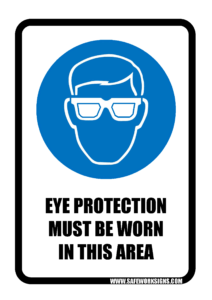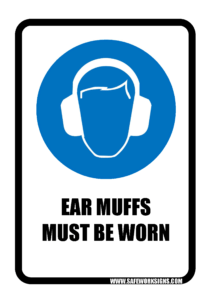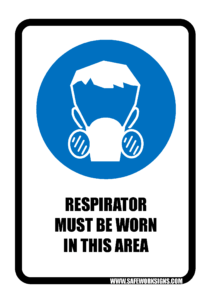The Importance of Personal Protective Equipment (PPE) in the Workplace"
Personal protective equipment, commonly referred to as "PPE", is equipment worn to minimize exposure to hazards that cause serious workplace injuries and illnesses. These injuries and illnesses may result from contact with chemical, radiological, physical, electrical, mechanical, or other workplace hazards
PPE includes equipment for personal protection as prescribed under legislation, regulation and workplace policies and practices.
PPE may include:
- Appropriate clothing such as high visibility vests or jackets so that other operators can easily see you.


- Safety helmet – helmets must be worn wherever there is a risk of objects falling from above and on any worksite where the hard hat sign is displayed.
- Non-slip safety footwear – choose footwear that is comfortable, gives maximum grip and provides protection from pinching, jamming and crushing.
Eye protection, e.g. goggles – wear eye protection if you are likely to be exposed to:
- Physical damage.
- Chemical damage.
- Radiation damage.


Ear protection – this must be worn where there is a high volume of noise.
Gloves – wear close-fitting pigskin gloves to protect your hands from:
- Heat and abrasion.
- Sharp edges.
Respiratory protective devices – may be needed if your work exposes you to:
- Toxic gases and vapourS
- Irritating dust, such as silica.
To prevent permanent damage caused by ultra violet rays always wear a hat, long sleeves, long trousers and use sunscreen when working outside.

What can be done to ensure proper use of personal protective equipment?
All personal protective equipment should be safely designed and constructed, and should be maintained in a clean and reliable fashion. It should fit comfortably, encouraging worker use. If the personal protective equipment does not fit properly, it can make the difference between being safely covered or dangerously exposed. When engineering, work practice, and administrative controls are not feasible or do not provide sufficient protection, employers must provide personal protective equipment to their workers and ensure its proper use. Employers are also required to train each worker required to use personal protective equipment to know:
- When it is necessary
- What kind is necessary
- How to properly put it on, adjust, wear and take it off
- The limitations of the equipment
- Proper care, maintenance, useful life, and disposal of the equipment
If PPE is to be used, a PPE program should be implemented. This program should address the hazards present; the selection, maintenance, and use of PPE; the training of employees; and monitoring of the program to ensure its ongoing effectiveness.
Source: Personal Protective Equipment – Overview | Occupational Safety and Health Administration (osha.gov)

